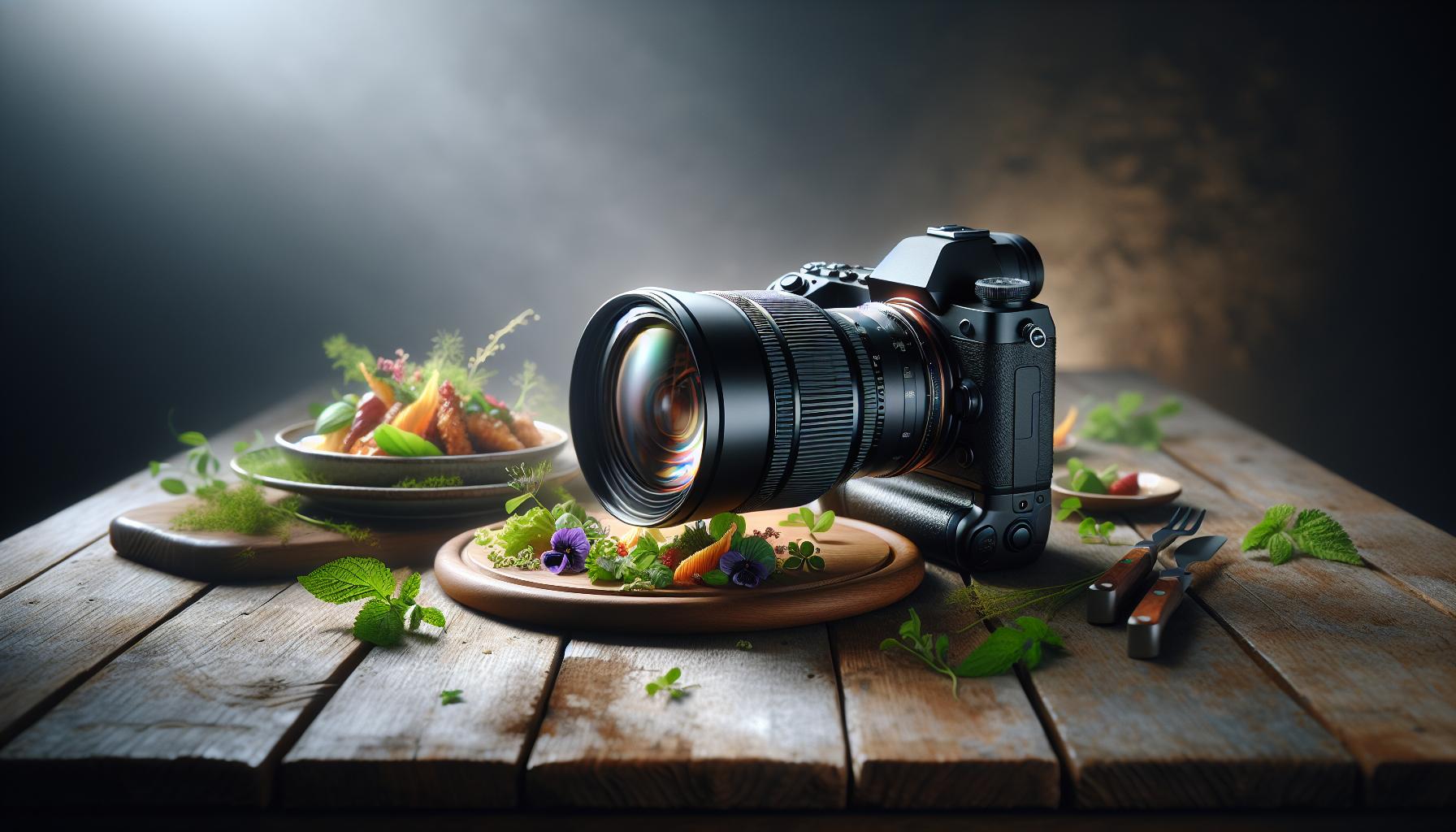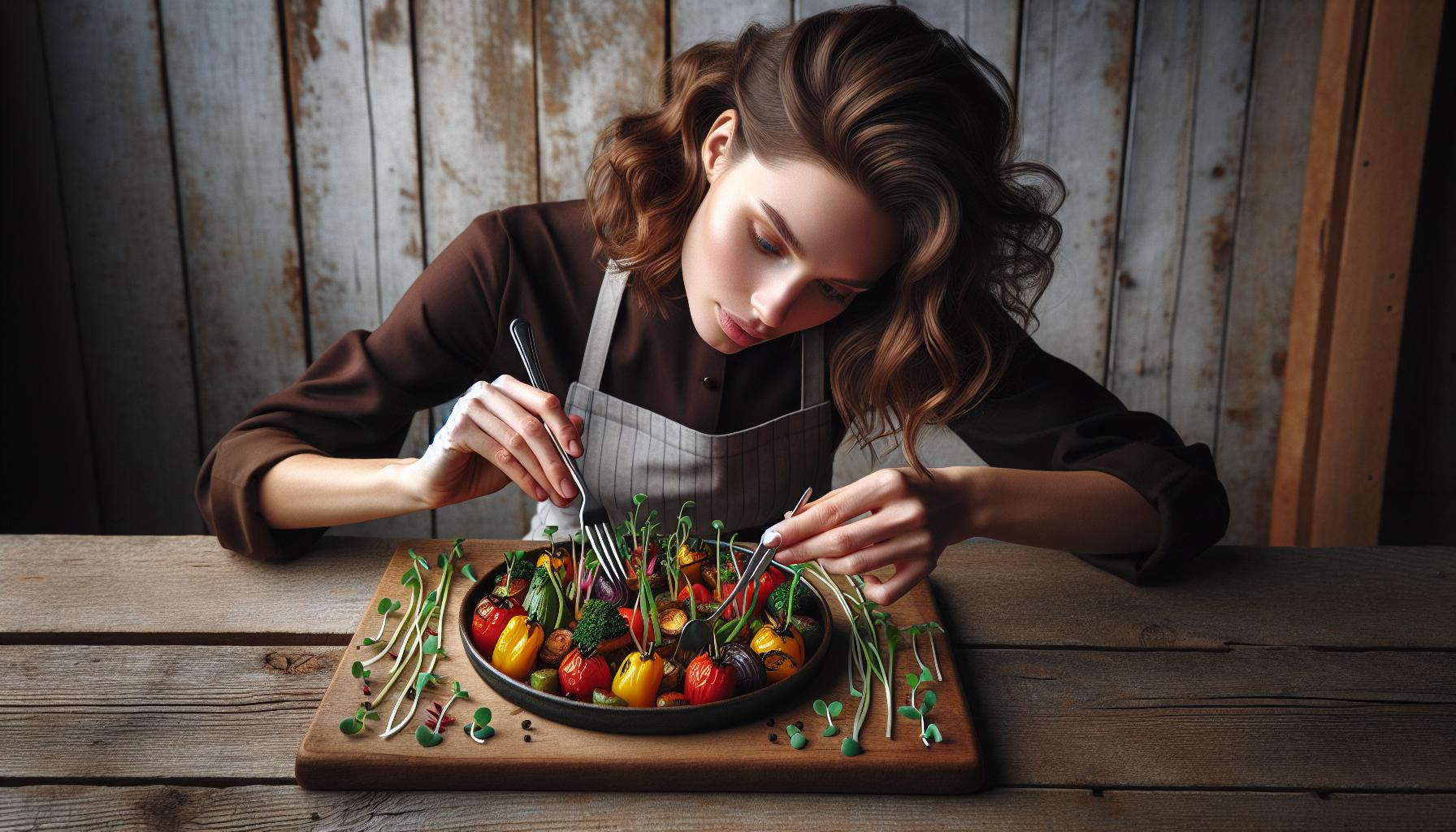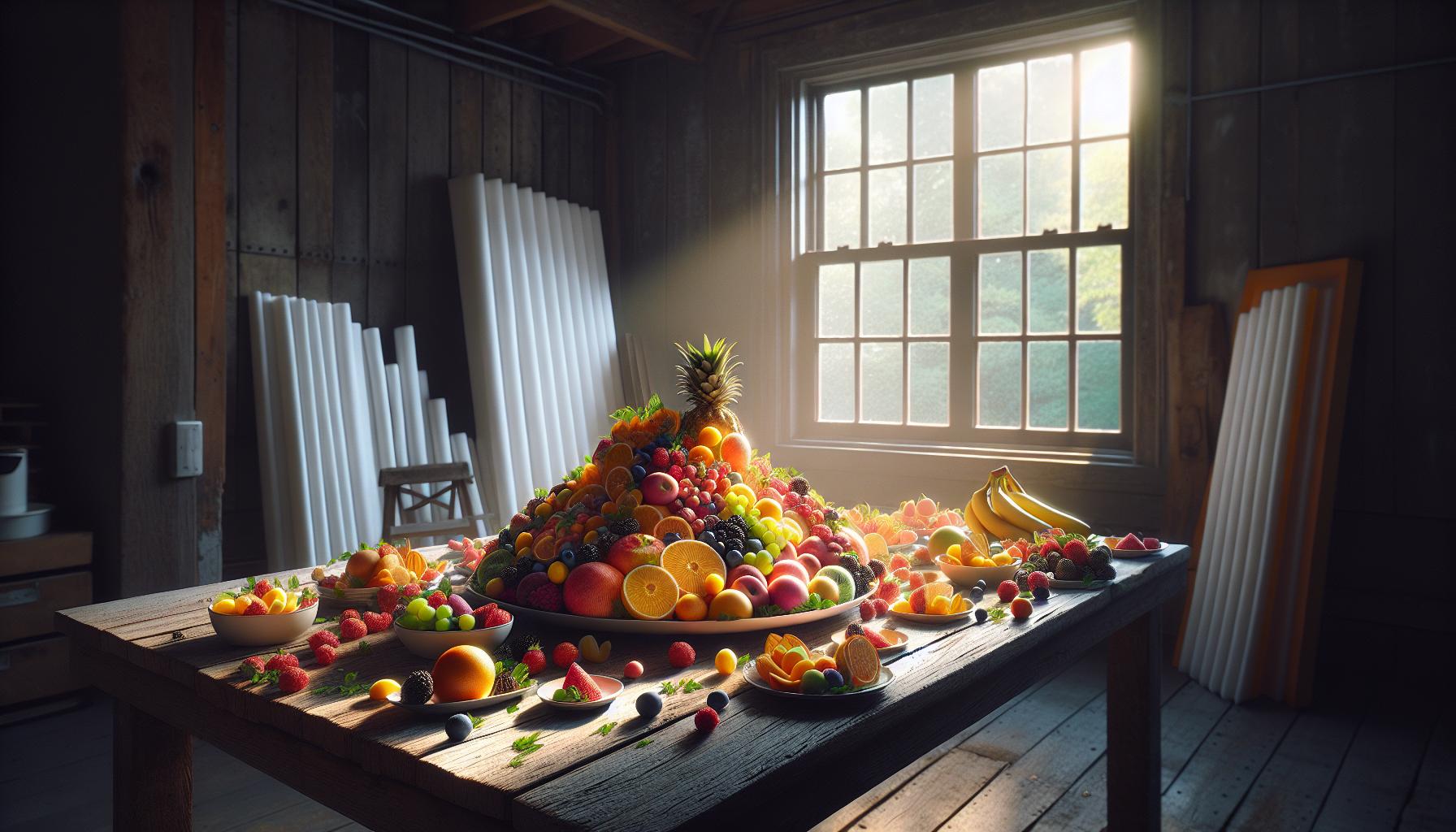Fine art food photography transforms ordinary dishes into extraordinary visual masterpieces that make viewers’ mouths water and hearts skip a beat. It’s where culinary artistry meets photographic excellence creating images that belong in galleries rather than just on Instagram feeds.
The intersection of lighting precision camera angles and artistic vision elevates food photography beyond mere documentation to a compelling art form. Top photographers in this niche don’t just capture what’s on the plate – they tell stories through carefully crafted compositions that celebrate texture color and form. From glistening droplets on fresh fruit to the perfect steam wisp rising from a hot cup of coffee these images turn simple meals into unforgettable moments frozen in time.
Fine Art Food Photography
Fine art food photography captures culinary subjects with artistic composition techniques used in traditional fine art mediums. This genre elevates food photography beyond commercial documentation to create visually striking images that tell stories through light, texture, color composition.
Fine art food photographers approach their subjects like painters approach canvas, considering:
- Artistic composition elements such as leading lines, rule of thirds, negative space
- Creative lighting setups that enhance drama, mood, atmosphere
- Styling choices incorporating props, backdrops, complementary colors
- Conceptual narratives expressed through visual elements
- Technical mastery of camera settings, angles, depth of field
The key characteristics that define fine art food photography include:
- Focus on aesthetic beauty over commercial functionality
- Intentional styling decisions that create visual narratives
- Creative manipulation of light, shadow, color theory
- Innovative compositions inspired by art principles
- Post-processing techniques that enhance artistic vision
Unlike commercial food photography that showcases products realistically, fine art food images prioritize:
- Emotional resonance through dramatic lighting
- Abstract interpretations of culinary subjects
- Personal artistic expression over literal representation
- Unique perspectives that challenge viewers’ expectations
- Experimental techniques that push creative boundaries
Professional fine art food photographers combine their deep understanding of:
- Classical art fundamentals like form, balance, movement
- Advanced photographic technical skills
- Food styling expertise
- Digital post-processing mastery
- Personal creative vision development
This specialized genre transforms ordinary food subjects into extraordinary visual artworks through deliberate artistic choices in composition, lighting, styling, technique.
Essential Equipment for Fine Art Food Styling

Fine art food photography demands specialized equipment to capture the intricate details of culinary compositions. Each piece of equipment plays a crucial role in transforming ordinary food subjects into extraordinary visual artworks.
Camera and Lens Selection
Professional-grade full-frame cameras deliver superior image quality essential for fine art food photography. The Canon EOS 5D Mark IV or Sony A7R IV provide exceptional dynamic range for capturing food textures. A versatile lens collection includes a 100mm macro lens for detailed close-ups, a 50mm prime lens for natural perspectives, and a 24-70mm zoom lens for varied compositions. Macro lenses reveal intricate food details like water droplets, bread crumbs or sugar crystals. Fixed prime lenses create beautiful background blur with wide apertures from f/1.4 to f/2.8.
Lighting Equipment
Controlled lighting setups enhance the artistic quality of food photographs. Key equipment includes LED continuous lights with adjustable color temperature (3200K-5600K), diffusion panels for soft illumination, and reflectors to fill shadows. Strobe lights with softboxes provide precise light control for dramatic effects. Light modifiers such as flags, grids or snoots direct light exactly where needed. A light meter ensures accurate exposure measurements across complex lighting setups.
Props and Backgrounds
The right props enhance compositional elements in fine art food images. Essential items include textured surfaces like marble slabs, weathered wood boards or slate tiles. Ceramic plates in neutral colors create clean foundations for food subjects. Vintage cutlery, linens or glass pieces add visual interest. A collection of backgrounds includes painted canvas backdrops, colored acrylic sheets or textured papers. Small decorative elements like fresh herbs, spices or edible flowers complement food styling.
Mastering Food Styling Techniques

Food styling techniques transform ordinary dishes into visually compelling compositions through deliberate arrangement and artistic principles. Professional food stylists combine technical expertise with creative vision to enhance the natural beauty of culinary subjects.
Composition Principles
Fine art food photography relies on classical composition techniques to create visually balanced images. The rule of thirds divides the frame into nine equal segments, placing key elements along intersecting lines for optimal visual impact. Leading lines guide viewers through the image, starting from foreground elements like utensils or garnishes toward the main subject. Negative space creates breathing room around the focal point, preventing visual clutter while emphasizing texture details. Strategic placement of complementary elements, such as herbs, spices or drizzles, establishes visual hierarchy through size relationships, directional flow and repetitive patterns.
Color Theory and Plating
Color harmony drives emotional responses in fine art food photography through strategic food placement and prop selection. Complementary colors like orange carrots against blue plates create dynamic contrast, while analogous color schemes using greens and yellows produce harmonious compositions. Monochromatic arrangements showcase subtle variations in tone through different cooking techniques or ingredient preparations. White space balances vibrant ingredients, preventing visual overwhelm. Careful plating considers height variation, asymmetrical balance and intentional imperfection to create organic, appealing arrangements. Strategic garnishing adds pops of color through fresh herbs, edible flowers or sauce drizzles that complement the main dish’s color palette.
Creating Mood Through Lighting

The interplay of light shapes the emotional resonance of fine art food photography. Lighting techniques create depth, texture, and atmosphere that transform food subjects into compelling visual narratives.
Natural Light Methods
Natural light creates soft, organic moods in fine art food photography. A north-facing window provides consistent diffused light throughout the day, eliminating harsh shadows. Positioning subjects 3-4 feet from the window creates optimal light fall-off. White foam boards or silver reflectors bounce light back onto shadow areas, adding dimension to textures. Sheer curtains or translucent paper act as diffusers to soften direct sunlight. Morning light (7-9 AM) produces cool, ethereal qualities, while late afternoon light (4-6 PM) adds warm, dramatic tones. Backlight through the window emphasizes steam, moisture droplets, or translucent ingredients like citrus slices.
Artificial Light Setup
Professional artificial lighting enables precise control over mood and atmosphere. One key light positioned 45 degrees from the subject creates directional lighting that reveals texture. LED panels with color temperature control (3200K-5600K) match natural daylight or add warm restaurant ambiance. Strip boxes produce rectangular catchlights on reflective surfaces like sauces or glazes. Flags and gobos shape light patterns, adding drama through controlled shadows. Fill cards placed opposite the main light lift shadows by 1-2 stops for balanced exposure. Grid spots focus light on specific areas, drawing attention to garnishes or texture details. Beauty dishes create wraparound light that’s ideal for reflective surfaces like glassware.
Post-Processing for Fine Art Results
Post-processing transforms raw food photographs into refined artistic expressions through deliberate editing choices that enhance visual impact while maintaining authenticity.
Color Grading
Professional color grading elevates fine art food photography by creating distinct emotional atmospheres. Adobe Lightroom’s HSL panel enables precise control over individual color channels to achieve specific moods: muting greens creates vintage aesthetics, enhancing oranges adds warmth to baked goods, deepening blues intensifies seafood presentations. Split-toning techniques add depth by introducing complementary colors in highlights and shadows. Color temperature adjustments between 5500K-6500K maintain natural food tones while selective color masking emphasizes key ingredients. Advanced photographers use tools like DaVinci Resolve to create custom LUTs for consistent artistic signatures across image series.
Texture Enhancement
Texture enhancement brings tactile qualities to life in fine art food photographs. Clarity adjustments between +15 to +30 reveal intricate surface details in crusty breads crusty breads pasta dishes. Selective sharpening targets specific areas using high-pass filters with 2-4 pixel radius settings. Dehaze tools at 5-15% strengthen definition in steam tendrils steaming dishes. Local contrast adjustments via Photoshop’s dodge burn tools emphasize varying textures: glossy sauces crispy crusts flaky pastries. Structure controls in Capture One enhance micro-contrast while preserving natural food appearances through masked applications on primary subjects.
Building Your Fine Art Food Portfolio
A curated fine art food photography portfolio showcases artistic vision through 15-20 signature images that demonstrate technical mastery. Each photograph illustrates distinct techniques such as dramatic lighting setups, creative compositions or unique styling approaches.
Selecting Portfolio Images
- Select photographs displaying diverse compositions (overhead shots, macro details, minimalist arrangements)
- Include images featuring varied lighting styles (moody shadows, bright high-key, dramatic side lighting)
- Showcase different food subjects (raw ingredients, plated dishes, abstract food forms)
- Highlight technical skills through texture capture precision sharpness color accuracy
Organizing Portfolio Flow
- Group images by visual themes (dark moody series bright airy collections abstract interpretations)
- Create visual transitions between photographs through color palettes textures compositions
- Balance the portfolio with both simple minimalist shots complex layered arrangements
- Present images in sizes that emphasize their strongest compositional elements
Portfolio Presentation Options
Digital Platforms:
- Personal website with custom galleries optimized for image quality
- Online portfolio platforms (Behance ProSite Format)
- Social media curation (Instagram artist profiles dedicated food photography feeds)
Print Materials:
- Professional photo books with archival quality prints
- Matted portfolio prints for in person presentations
- Exhibition quality large format prints for galleries shows
| Technical Aspect | Implementation |
|---|---|
| Lighting | 3-4 distinct lighting styles |
| Composition | 5-6 different approaches |
| Subject Matter | 4-5 food categories |
| Post-Processing | 2-3 signature editing styles |
Where Culinary Artistry Meets Visual Storytelling
Fine art food photography stands as a powerful medium where culinary artistry meets visual storytelling. It’s a craft that demands technical expertise creative vision and unwavering attention to detail.
From mastering professional equipment to perfecting composition techniques photographers transform simple ingredients into captivating visual narratives. Through careful styling thoughtful lighting and skilled post-processing they create images that transcend mere documentation.
The journey to becoming a skilled fine art food photographer requires dedication practice and an artistic eye. Yet the reward lies in creating timeless images that celebrate the beauty of food and inspire viewers to see everyday dishes in an entirely new light.

